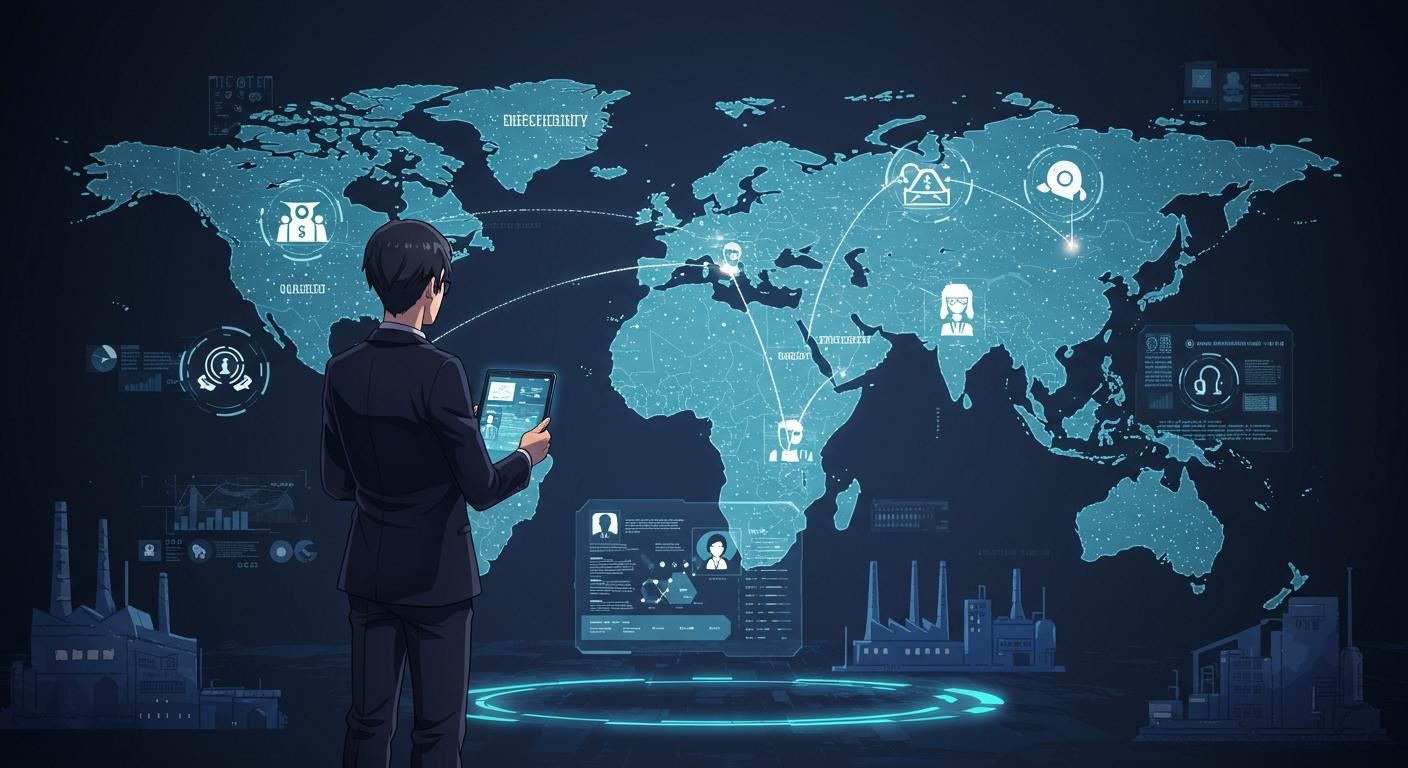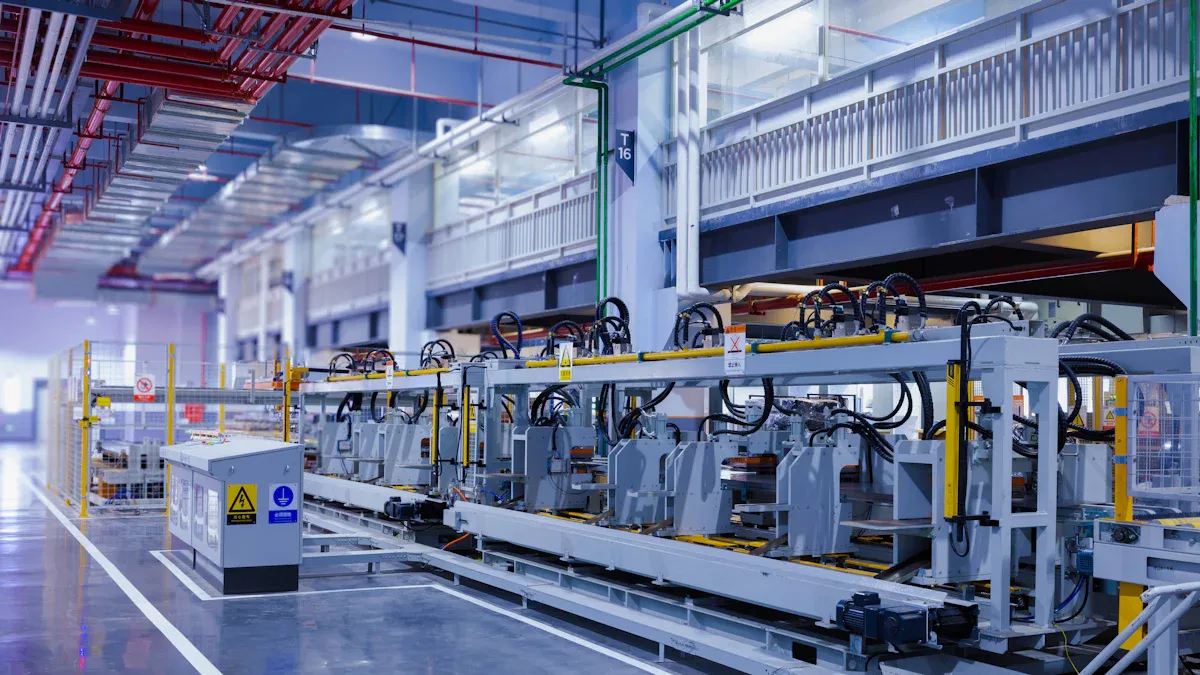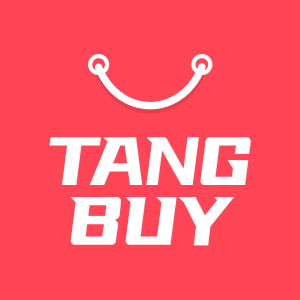The Power of Factory Data: How AI Connects You to China’s Best Suppliers

AI-powered factory data is changing how you find suppliers in China. You can find the best partners more quickly. You can trust your choices more easily. Here are some top ways businesses save time and work better:
Efficiency Improvement | Description |
|---|---|
Optimal Sourcing Strategies | AI looks at old data and market trends. It suggests the best ways to get supplies. |
Cost-Saving Opportunities | AI finds places where you can spend less money. It helps you pick better suppliers. |
Supplier Risk Highlighting | AI checks and shows possible risks with suppliers. |
Automation of Supplier Discovery | AI does the first steps of finding suppliers. It helps make RFPs, so you save time and effort. |
The Power of Factory Data helps you check if suppliers are reliable. You can see risks and make choices that fit your rules for openness and caring for the environment.
Key Takeaways
Factory data powered by AI helps you find suppliers fast. You can discover top suppliers in China in just a few hours.
AI helps you save money. It finds ways to cut costs and shows you better supplier choices.
AI builds trust and makes things clear. It gives you updates on how suppliers are doing and if they follow rules.
You can lower risks with AI. It spots problems with suppliers before they get worse.
To use AI in your sourcing, check your data first. Make sure your data is good and accurate.
AI can do boring tasks for you. This gives you more time to make smart choices and talk to suppliers.
Check how suppliers are doing often. Use important numbers to make sure they are good and reliable.
Learn about new AI and factory trends. This helps your business stay strong and work well.
Power of Factory Data

Immediate Benefits
When you use the Power of Factory Data, you see results fast. AI tools help you find good suppliers in China quickly. The system does boring jobs for you. This lets you focus on bigger choices. Many companies see their teams work faster and make fewer mistakes. You also save money because AI finds ways to spend less and stop problems early.
Here’s a quick look at what you get:
Benefit | Description |
|---|---|
Speed and Efficiency | The system does boring jobs, so you finish tasks faster and get more done. |
Supplier Relationship Management | You get clear facts about how suppliers do their jobs, so it is easier to trust them. |
Cost Savings | AI finds waste and helps you get better deals, so you spend less. |
Risk Mitigation | AI checks suppliers all the time, so you can fix small issues before they get worse. |
Compliance and Governance | AI helps you follow rules and get ready for checks, so your business stays safe. |
You get more than just speed. The Power of Factory Data lets you see your supply chain clearly. You know what is happening at every step. This helps you stop delays and surprises.
Supplier Discovery
Finding the right supplier in China used to take a long time. Now, with the Power of Factory Data, you can find top suppliers in days or even hours. AI looks at lots of information, like prices, quality, and delivery times. It then shows you the best choices, so you do not have to guess.
AI helps you find suppliers with good prices and high quality.
You get updates right away about suppliers and the market.
Automated tools make it easy to talk to suppliers and get answers fast.
Let’s look at a real example. A global car company needed a new supplier for electronic parts. They used an AI-powered platform and found 15 good suppliers in just 48 hours. The system also showed any risks, so the team could make smart choices quickly. This kind of speed and accuracy was not possible before the Power of Factory Data.
Trust and Transparency
You want to trust your suppliers. The Power of Factory Data helps you do this. AI gives you updates right away, so you always know what is happening. You can see if a supplier follows the rules and meets your standards. This builds trust and helps you avoid costly mistakes.
Benefit | Explanation |
|---|---|
Better buyer confidence | You feel sure about your choices because you see everything clearly. |
Fewer rejections | You waste less time and money because you pick the right suppliers from the start. |
Faster approvals | You move from idea to finished product much quicker. |
AI also helps you spot risks before they become big problems. It can warn you about delays or issues, so you can act early. This keeps your business running well and protects your reputation. When you use the Power of Factory Data, you build stronger relationships with suppliers. You both know what to expect, and you can work together to fix problems.
Tip: When you trust your data, you can trust your suppliers. This makes your whole supply chain stronger and more reliable.
Factory Data Explained
Factory data means the information you get from manufacturers. It tells you how they run their business. You use this data to help pick suppliers in China. It includes things like how much they make and how they check quality. When you use the Power of Factory Data, you learn the truth about each supplier.
Data Types
There are many kinds of factory data. Each kind helps you see a different part of the supplier’s work.
Production capacity: Shows how much a factory can make in a set time.
Quality control records: Tells you how often products pass or fail checks.
Delivery performance: Tracks if suppliers send goods on time.
Compliance certificates: Proves that factories follow rules and standards.
Financial reports: Gives clues about the supplier’s stability.
You can use these types of data to compare suppliers. This helps you find the best one for your needs.
Data Sources
You might wonder where this data comes from. Good sources are very important. Here are some places you can trust:
Ministry of Commerce
Industry associations
Company filings
Interviews with domestic experts and market players
These sources give you correct and new information. You can feel sure about your choices when you use trusted data.
Why It Matters
Factory data is important because it helps you avoid problems. It also helps you build strong partnerships. Let’s see why it matters.
Quality

You want products that meet your standards. Factory data lets you check if suppliers have good quality control. You can:
Look for certifications like ISO 9001.
Visit factories to see how they work.
Clear rules and open talks help you set what you want. When you ask for feedback, you make it easy to talk about quality.
Compliance
You need suppliers who follow the rules. Factory data shows if they have the right certificates. It also shows if they meet legal standards. This keeps your business safe and ready for checks.
Risk
Risks can happen at any time. Factory data helps you spot problems early. AI-powered analytics show you the supplier network clearly. You see risks that were hidden before, like money problems or bad compliance. This means you can act fast and keep your supply chain strong. Seeing more helps you make better choices and have a stronger business.
Tip: When you use the Power of Factory Data, you have more control and feel more sure about every supplier choice. You build strong relationships and avoid surprises.
AI in Supplier Selection

Choosing the right supplier can feel like a guessing game. You want to make smart choices, but there is so much information to check. This is where AI steps in and changes the game for you. With the help of AI, you can look at more data, spot patterns, and make decisions with confidence. Let’s break down how AI helps you pick the best suppliers in China.
Key Metrics
AI does not just look at one thing. It checks many important details about each supplier. These details, or metrics, help you see the full picture.
Capacity
You need to know if a supplier can handle your orders. AI checks how much a factory can produce and how quickly they can do it. It looks at:
Production volume over time
On-time delivery rates
How often they meet big orders
If a supplier often delivers late or cannot keep up with demand, AI will spot this right away. You can avoid slowdowns and keep your business moving.
Performance
Performance tells you how well a supplier does their job. AI reviews:
Defect rates in products
Quality scores from past orders
Response times to your questions
Cost management and price changes
You get a clear view of who keeps their promises and who might let you down. For example, if a supplier has a high defect rate, you will know before you sign a contract.
Records
Records show you the history of a supplier. AI checks:
Contract compliance and adherence rates
Financial stability and reports
Total cost of ownership
Supplier responsiveness
You can see if a supplier follows the rules and pays attention to details. This helps you avoid surprises later.
Here’s a quick table to sum up the most common metrics AI uses:
Metric | What It Tells You |
|---|---|
On-time delivery | Can the supplier meet deadlines? |
Defect rates | How often do products have problems? |
Cost management | Does the supplier control costs well? |
Response times | How quickly do they answer you? |
Contract compliance | Do they follow agreements? |
Quality scores | Are their products up to standard? |
Price variance | Do prices change a lot? |
Total cost of ownership | What is the real cost over time? |
Supplier responsiveness | Are they easy to work with? |
Contract adherence | Do they stick to the rules? |
AI Analysis
AI does more than just collect numbers. It analyses all the data for you. You get insights that would take weeks to find on your own. AI uses machine learning to spot trends and patterns. It can even predict future problems before they happen.
You might wonder how this is better than old ways of picking suppliers. Traditional methods often miss small details or have errors. AI fixes these problems. It checks huge amounts of data quickly and gives you reliable answers. You do not have to worry about missing something important.
AI agents can dig deep into both structured data, like spreadsheets, and unstructured data, like emails or reports. This gives you a full view of each supplier. You can see where a supplier shines and where they need to improve. If a supplier has a history of late deliveries, AI will flag it. If another supplier always meets quality standards, you will see that too.
China’s AI + Manufacturing initiative has made these tools even smarter. Generative AI now helps you model risks and spot hidden issues. For example, a company used AI to review hundreds of supplier records. The system found a pattern of late shipments from one supplier, even though their reports looked fine. The company switched suppliers and avoided costly delays.
Tip: Let AI do the heavy lifting. You can focus on building relationships and growing your business.
With the Power of Factory Data, you do not just react to problems. You get ahead of them. AI helps you make choices that keep your supply chain strong and your business safe.
Practical Strategies

Integration Steps
You want to use AI-driven factory data in your sourcing. But you may not know how to begin. Let’s look at some easy steps. These steps help you use your data well.
Assess your current data landscape. Check what data you have now. See what is good and what needs fixing.
Conduct a full data inventory and audit. Write down every data source in your company. This helps you keep track and update things later.
Measure the quality and completeness of your data. Look for missing parts or mistakes. Fix these so your data is strong.
Review data security, compliance, and regulatory readiness. Make sure your data follows privacy laws and rules.
Build a strong data foundation. Set up a system that can grow with your needs.
Clean, enrich, and prepare your data. Make your data better so AI can work well.
Implement a strategic data pipeline for AI. Automate how you collect and change data. This turns raw data into helpful insights.
Tip: Start with one supplier first. Test these steps before using them everywhere.
Maximising Value
When you have AI-powered factory data, you want the best results. Here are some simple ways to get more value:
Stratify your supplier network. Work with more than one supplier to lower risk.
Automate manual processes. Let AI do boring jobs and cut down on mistakes.
Use analytics dashboards. Get updates on how suppliers are doing.
Digitise contracts. Link contract data to your work to save money and time.
Collaborate with suppliers. Share data and watch changes together. This helps you manage contracts and materials.
Set clear expectations during onboarding. Tell suppliers your rules and standards.
Continuously evaluate vendor performance. Use KPIs to check quality and trust.
Here’s a table to help you remember these best practices:
Best Practice | Description |
|---|---|
Digitise Contracts | Link contract data with your systems for better savings and speed. |
Automate Procurement Processes | Make it easier to talk about prices, stock, and delivery times. |
Collaborate with Suppliers | Watch changes and manage contracts and materials together. |
Note: If you use these strategies, you will work faster and spend less. Over time, you build better supplier relationships and find new ways to grow.
You can check your return on investment by setting clear goals. Track your progress and compare your results with others. Keep checking your data and change your plan as you learn. This way, your AI-powered factory data keeps giving you value.
Addressing Concerns
When you start using AI-powered factory data, you might worry about a few things. You want to know if the data is reliable, if you can fit new systems into your old ones, and if you can trust the process. Let’s talk about these concerns and how you can handle them.
Data Reliability
You need to trust the data you use. If the data is wrong or messy, your decisions might not work out. Many companies face these common problems:
Data quality issues, like missing or inconsistent information.
Trouble mixing new AI tools with old systems.
People in your team might not want to change how they work.
Not enough experts who know how to use AI.
Expecting too much from AI and feeling let down.
You can solve these problems by setting up strong rules for how you collect and use data. Train your team so they feel confident with new tools. Change can feel hard, but with good support, your team will get on board. When you keep your data clean and your team ready, you get better results.
Tip: Start small. Test your data and AI tools with one supplier first. This helps you spot problems early and build trust in the system.
Integration
Bringing AI into your business can feel tricky. Many companies find that 70% of AI projects fail because of poor data, old systems, or trouble growing the system as the business grows.
You might run into these challenges:
Data rules that make it hard to get or use information.
Building data pipelines that can handle lots of different data.
Old systems that do not work well with new AI tools.
Here are some ways you can make integration easier:
Use strong security, like encryption and access controls, to keep your data safe.
Pick AI tools that fit your business needs.
Choose systems that can grow with you.
Make sure your new tools can talk to your old ones.
“Manufacturers can make machines work together by using platforms that connect different types of equipment. This helps everything run smoothly and makes it easier to add new tools later.”
Transparency
You want to see how AI makes decisions. You also want to know what data it uses. Good AI systems help you do this by:
Keeping clear records of any changes to the system or data.
Sharing regular reports about updates and what they mean for you.
Explaining how they collect, store, and use your data.
Checking for bias and fixing it when needed.
Telling you what data they use and what they leave out.
Transparency Practice | What It Means for You |
|---|---|
Regular transparency reports | You stay informed about system changes |
Open data communication | You know how your data is used |
Bias checks | You get fair and balanced results |
When you know what is happening behind the scenes, you feel more confident. You can trust your choices and show your customers that you care about doing things right.
Note: In China’s fast-moving AI manufacturing world, being open and honest about data and decisions helps you build stronger partnerships and avoid surprises.
Future Trends

AI Innovations
AI is changing factories in China very quickly. New tools like AI-powered robotics and digital twins are now used in big industries. These include new energy vehicles, aerospace, and biomedicine. These tools help make production lines smarter and faster. Digital twins let you make a virtual copy of your factory. You can test changes on the computer before trying them for real. AI-powered robots help finish jobs faster and with fewer mistakes. Smart inspection systems find problems early, so you can fix them quickly.
Predictive maintenance is another big improvement. Sensors watch your machines all the time. AI checks the data for signs of trouble, like strange shakes or high heat. This helps you fix things before they break down. For example, one auto parts supplier in China used predictive maintenance and had 27% less unplanned downtime. Some factories have seen downtime drop by half. You do not need to buy new machines. You just use your data in a better way.
Tip: Try using digital twins and predictive maintenance together. You will find problems early and keep your factory working well.
Supplier Relationships
AI is not only for machines. It also changes how you work with suppliers. You can now use AI to do simple jobs, like checking orders or tracking shipments. This gives you more time to build good partnerships. Data helps you make better choices. You can see which suppliers care about the environment or fair work rules.
Here are some trends you will see:
More daily jobs done by AI tools.
Better choices because you have clear data.
Stronger relationships with suppliers.
More focus on picking suppliers who care about ethics and the planet.
You and your suppliers can now work together to fix problems and grow. You both get better by sharing data and ideas.
Next Steps
China has some big challenges, like an ageing population and slower growth. The government wants more technology in factories to keep the economy strong. The 'AI Plus' plan is helping factories use more technology and work better. Generative AI is growing fast in China. Experts think the market will go from almost $6 billion in 2025 to over $38 billion by 2031. By 2030, generative AI will be used everywhere, from designing products to making content.
Trend | What It Means for You |
|---|---|
AI Plus Initiative | More help for using AI in factories |
Generative AI Growth | Smarter tools for design and planning |
Focus on Efficiency | Lower costs and better results |
You can get ready by learning about these new tools now. Start small, test what works, and keep getting better. The future of factory data in China looks bright, and you can lead by using AI to connect with the best suppliers.
You can see how AI-powered factory data changes sourcing in China. It makes supply chains stronger and helps factories work better. You can make smarter choices with this data.
Findings | Description |
|---|---|
Stronger supply chains | AI helps your supply chain stay strong and work well. |
Greener productivity | Factories use data to reach green targets. |
Better results | AI changes how you work and come up with new ideas. |
China’s AI + Manufacturing plan will bring more big changes soon:
Production will be faster and kinder to the planet
Factories will be smarter and lead the world
Technology and industry will join to make better things
It is a good time to use these tools and stay ahead in global sourcing.
Private Labelling with Tangbuy
Benefits
You want your shop to stand out. Private labelling helps you do just that. When you use Tangbuy, you get more than just products. You build your own brand. You choose how your items look and feel. Your customers remember your shop because it feels special.
Here’s a quick look at what private labelling with Tangbuy can do for you:
Benefit | Description |
|---|---|
Custom Packaging | You create unique branding that grabs attention. |
Access to Trending Products | You offer items that people want right now. |
Low Investment for Testing | You order small batches and see what sells best. |
Fast Fulfilment | Your products ship quickly from Tangbuy’s US warehouse. |
You don’t need a big budget to start. You can test new ideas without risking much money. If a product does well, you order more. If it doesn’t, you try something else. Fast shipping means your customers get their orders quickly. Happy customers come back for more.
Tip: Private labelling lets you control your shop’s look. You decide how your brand feels to shoppers.
Tangbuy Services
Tangbuy gives you lots of ways to make your products unique. You pick colours, materials, and designs that match your brand. You can add custom printing, embroidery, or even laser engraving. These options help you create items that people remember.
Here’s a table showing what you can customise with Tangbuy:
Customisation Option | How It Helps You Build Your Brand |
|---|---|
Colours | Match your shop’s style and stand out |
Materials | Offer products that feel different and special |
Designs | Make items that people recognise |
Add your logo or message | |
Embroidery | Give products a high-quality look |
Laser Engraving | Personalise items for each customer |
You don’t have to settle for plain products. You can make every item feel like it belongs in your shop. Customers love buying things that feel personal. When you offer custom touches, you show that you care about quality.
Note: Tangbuy’s team helps you choose the best options for your brand. You get advice and support every step of the way.
Integration
Adding private labelling to your dropshipping business is easier than you think. Tangbuy works with popular platforms like Shopify and WooCommerce. You connect your shop, pick your products, and choose your custom options. The system guides you through each step.
You can start with a few products and see how your customers react. If you get good feedback, you add more items. Tangbuy’s fast fulfilment means you don’t have to worry about delays. Your orders ship from the US, so customers get their packages quickly.
Here’s how you can integrate Tangbuy into your workflow:
Choose products that fit your brand.
Pick custom options like colours and designs.
Connect your shop to Tangbuy.
Test with small batches.
Watch customer feedback and adjust your range.
You don’t need special skills to get started. Tangbuy’s dashboard is simple. You follow the steps and see your brand grow. Private labelling helps you stand out and keeps customers coming back.
Examples
You may wonder how private labelling with Tangbuy works. Here are some examples to help you understand. These show how you can build your brand and stand out.
1. Custom Skincare Line
Think about selling skincare products. You pick popular items like face masks and serums. With Tangbuy, you choose your own packaging colours and add your logo. You can also pick eco-friendly materials. Your shop now has a special skincare line. It looks different from other shops online. Customers remember your brand because it feels personal and unique.
2. Personalised Fitness Gear
You want to sell fitness gear, like water bottles and yoga mats. Tangbuy lets you add custom printing or embroidery. You can offer bottles with fun quotes or mats with your shop’s name. This makes your products more interesting. Shoppers like buying gear that feels made just for them.
3. Trendy Tech Accessories
Tech accessories are always in demand. You pick phone cases and wireless chargers. Tangbuy gives you laser engraving options. You add cool designs or customer names. Your shop stands out because people can personalise their tech products. This helps you get repeat buyers.
Here is a table showing how private labelling changes your shop:
Product Type | Standard Dropshipping | Private Labelling with Tangbuy |
|---|---|---|
Skincare Products | Generic packaging | Custom colours, logo, eco-friendly materials |
Fitness Gear | Plain items | Embroidery, printing, shop branding |
Tech Accessories | Basic designs | Laser engraving, personalisation |
Tip: Start with a small batch of customised products. Test what your customers like best. You can add more options as your brand grows.
4. Seasonal Gift Sets
You want to sell more during holidays. Tangbuy helps you make gift sets with custom packaging. You pick products for the season, like candles for winter or towels for summer. You add festive designs and your shop’s logo. Customers enjoy buying gifts that look special and thoughtful.
5. Niche Fashion Items
You focus on a niche, like eco-friendly fashion. Tangbuy lets you pick sustainable materials and add your own labels. You offer clothes that match your brand’s values. Shoppers who care about the environment notice your shop and come back again.
Note: Private labelling is not just about looks. It helps you build trust. When customers see your brand on products, they know you care about quality.
You can use Tangbuy to turn normal products into something special. Your shop becomes memorable. You attract loyal customers who want more than just plain items. Private labelling lets you create a brand that stands out in any market.
Common Mistakes
Even with the best AI-powered tools, you can still make mistakes that slow down your dropshipping business. Let’s look at three common pitfalls and how you can avoid them.
Over-Reliance on Automation
It’s easy to trust automation for everything. You might think the software will handle all your tasks. But if you depend too much on algorithms, you can run into trouble. Here’s a table showing what can go wrong when you let automation take over:
Drawback | Explanation |
|---|---|
Algorithmic Dependence | If you trust algorithms too much, you might see errors in pricing or stock levels. This can disrupt your shop. |
Inaccurate Product Information | Automated tools sometimes miss details. Wrong product info can upset customers and hurt your reputation. |
Limited Customisation | Relying only on automation means you lose control. You might not be able to tweak things as you like. |
Inability to Adapt to Trends | Automation can miss new trends. You might not spot changes in what customers want. |
Tip: Use automation to save time, but always check your shop yourself. Your judgement matters.
Ignoring Validation
AI tools can find products fast, but you still need to check if those products really work for your shop. Skipping this step can lead to problems. Here are some risks you face if you ignore validation:
Misaligned expectations: You might hope for quick wins, but results often take time and effort.
Vague ROI strategy: Without a clear plan, you could spend money without seeing real gains.
Poor data quality: If your data is weak, your AI tool won’t give good results.
Lack of a defined problem statement: If you don’t know what problem you want to solve, you might use AI just for the sake of it.
Always test products before you add them to your shop. Look at reviews, order samples, and check if the supplier is reliable. This helps you avoid costly mistakes.
Neglecting Branding
Branding is not just about a logo or colours. It’s about how people remember your shop. If you skip branding, your business can get lost in the crowd. A strong brand helps you stand out and builds trust with your customers. People are more likely to buy from you again if they remember your name and feel good about your shop. Without branding, you may struggle to keep customers coming back, and your growth can stall.
Remember: Your brand is your promise to your customers. Make it strong, and you’ll see long-term success.
Future Trends

Predictive Analytics
Dropshipping is going to change a lot soon. Predictive analytics will help you see what is coming. AI-powered tools will guess market changes before they happen. Platforms like Jungle Scout and Sell The Trend will use data to find trending products early. These tools will check search patterns, social media, and buying data. You will get alerts about new chances, so you can act quickly and stay ahead.
AI in dropshipping is changing how you find good products. You do not need to look through long lists. You can check thousands of data points in seconds.
Future AI systems will use weather, social events, and money news together. This means you can guess demand spikes more easily. You might know which products will sell well at a festival or when the weather changes. You will make better choices and avoid buying things that do not sell.
Supply Chain Integration
Supply chain integration is another big trend to watch. AI will link different data sources and make your business run better. You will see systems that connect your shop with suppliers, warehouses, and delivery services. This helps you track orders, manage stock, and stop delays.
Here is a simple table showing how supply chain integration helps:
Benefit | What You Get |
|---|---|
Real-time tracking | See where your products are anytime |
Automated restocking | Never run out of popular items |
Faster delivery | Get orders to customers quickly |
Fewer mistakes | Reduce errors in orders and shipping |
You will spend less time fixing problems and more time growing your shop. AI will do the boring jobs, so you can focus on finding new products and keeping customers happy.
Personalisation
Personalisation is getting more important every day. Soon, AI-powered shopping assistants will help buyers as they shop. You will give personalised suggestions based on what each customer likes. This makes shopping easier and more fun for everyone.
You will also see computer vision technology being used. Customers can upload photos and quickly find similar products in your shop. Voice commerce will let people order using smart speakers. Your shop will feel modern and interactive.
Personalised product suggestions
Virtual shopping assistants
Voice ordering with smart devices
Instant product matching from photos
You will build stronger relationships with your customers. They will remember your shop because you make their experience special. Personalisation helps you stand out and keeps shoppers coming back.
You now have a clear path to boost your dropshipping business. Try different AI-Powered Tools to speed up product research and spot trends early. Think about what your shop needs most. If you want to stand out, add private labelling with Tangbuy for a unique brand. Take action today—test these tools, watch your results, and see your shop grow.
FAQ
How does AI-powered factory data help me find suppliers faster?
AI scans thousands of suppliers in seconds. You get a shortlist based on your needs. You save time and avoid manual searching. The system updates you with the latest options.
Can I trust the data from Chinese factories?
You get data from official sources and verified reports. AI checks for errors and flags risks. You see clear records and certificates. This helps you make safe choices.
Tip: Always ask for recent compliance certificates before you decide.
What types of factory data should I look for?
You should check production capacity, quality records, delivery times, and financial reports. These show you how a supplier works. You can compare suppliers easily.
Data Type | Why It Matters |
|---|---|
Capacity | Shows output potential |
Quality Records | Reveals product issues |
Delivery Times | Tracks reliability |
Financial Reports | Checks stability |
Is it hard to add AI tools to my current system?
You can start small. Many AI tools work with your existing software. You get help from support teams. You test with one supplier first, then expand.
How does AI improve supplier relationships?
AI gives you real-time updates. You spot problems early. You share data with suppliers and solve issues together. This builds trust and helps you work better.
What if my team is not ready for AI?
You train your team step by step. You start with simple tasks. You show them how AI saves time. You build confidence as you go.

TangBuy: A Smarter Way to Dropship in 2025
If you're looking to stay competitive with dropshipping in 2025, speed and trend-awareness are key. TangBuy helps you stay ahead with real-time product trends, fast fulfilment, and factory-direct sourcing. With over 1 million ready-to-ship items, 24-hour order processing, and seamless Shopify integration, TangBuy makes it easier to test, scale, and succeed in today's fast-moving eCommerce landscape.
See Also
Discover 5 Innovative Techniques to Find Trending Products
Tips for Locating Trustworthy Wholesale Jeans Suppliers Easily
Effective Ways to Source Party Supplies for Higher Profits
Using Personalised Aprons to Enhance Dropshipping Success in 2025
2025 BigBuy Dropshipping Review: Genuine User Feedback and Insights

